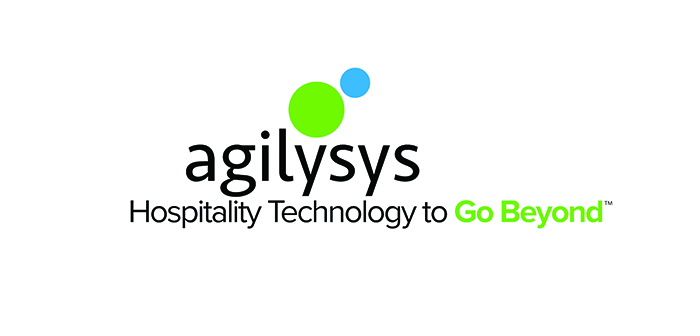
- Solutions
- Food & Beverage Ecosystem
Food & Beverage Ecosystem
Optimizing food & beverage operations and profitability demands a flexible, enterprise-class point-of-sale system. Is yours up to the task?
Go- Hospitality & Leisure Ecosystem
Hospitality & Leisure Ecosystem
From an individual location to an enterprise chain, get the most modern, mobile solution for managing your hospitality business
Go
- Inventory & Procurement Ecosystem
Inventory & Procurement Ecosystem
Designed to optimize foodservice and retail inventory and procurement operations for hotels, resorts, universities, restaurants and others.
Go
- Professional Services
Professional Services
Hospitality businesses are global, 24/7 operations with complex technology demands. You don’t have to go it alone.
Go
- Solution Studios
- Hotels
Hotels
Whether you operate a single boutique location or a large hotel chain, there’s an Agilysys hotel solution for you.
Go- Resorts
Resorts
Whether you operate a single boutique location or a large complex resort, your property is a unique operation that requires robust solutions supported by an experienced technology partner
Go
- Casinos
Casinos
You’re more than a gaming operation. You’re a full-service casino resort property and success isn’t about playing the odds, it’s about making the most of every revenue opportunity.
Go
- Tribal Gaming
Tribal Gaming
A leader in casino hospitality management solutions who respects the sovereignty of your nation.
Go
- Cruise Lines
Cruise Lines
Smooth seas ahead: technology solutions from Agilysys, a leader in cruise management systems.
Go
- Higher Education
- Corporate Dining
Corporate Dining
Identify emerging dining trends while aligning coverage with demand and capturing more revenue.
Go
- Healthcare
Healthcare
Delight patients & visitors, retain staff and grow margins with a suite of hospitality solutions for healthcare environments.
Go
- Life Plan Communities
- Foodservice Management
Foodservice Management
End-to-end foodservice management software solutions for optimum productivity and profitability.
Go
- Stadiums
- Restaurants
- Airports
Airports
Optimizing dozens of food & beverage outlets throughout your facility demands world-class POS performance combined with real-time operating insights.
Go
- Resorts
- Resources
- Articles
Articles
Access our library and read about the latest in emerging technology and other hospitality trends. Find tips and insights on accelerating business growth and improving guest satisfaction.
Go- Customer Stories
Customer Stories
Learn why so many businesses, small and large, partner with Agilysys for their hospitality technology needs.
Go
- Customer Videos
Customer Videos
Watch and learn what Agilysys customers have to say about their experiences with our solutions.
Go
- Product Resources
Product Resources
An in-depth collection of product information and datasheets. Read about the latest in hospitality technology features designed to solve the challenges faced by hospitality professionals around the globe.
Go
- Product Showcase
Product Showcase
Hear from industry professionals about the latest advancements, including tips and tricks, in hospitality and emerging technologies. Check out the library of demo videos and webinar recordings.
Go
- Webinars
Webinars
Watch and learn about the latest in successful technology trends and hear from hospitality professionals in this selection of interactive videos.
Go
- Industry Reports
Industry Reports
Important research and studies from across the hospitality industry. Find out what thought leaders are saying.
Go
- Customer Stories
- Company
- Leadership
- Solution Partners
Solution Partners
Agilysys has a broad collection of partners and APIs to help you assemble the perfect solution for you.
Go
- Our Customers
Our Customers
Discover how Agilysys customers like you are using our solutions to improve their business and guest experience.
Go
- Investor Relations
- News
- Events
Events
With the Agilysys commitment to 100% Hospitality solutions, we take industry events and conferences seriously. Please see where you can find Agilysys to learn more.
Go
- Career
- FAQS
FAQS
Go
- Solution Partners
- Support
- Contact Support
- Microsoft Patch Testing
Microsoft Patch Testing
See what Microsoft products and versions are currently support by Agilysys.
Go
- Payment Center
- RMA Requests
- Supply Order
Supply Order
Go
- Hospitality IQ
Hospitality IQ
Go
- Knowledge Center
Knowledge Center
Go
- Microsoft Patch Testing
- Blogs
- MyAgilysys
-
 Get a Demo
Get a Demo 877 369 6208
877 369 6208
×Home
☰- Explore
WHAT'S THE BUZZ IN HOSPITALITY?
Digital Ordering for The Digital Guest
Whether at corporate cafeterias or in any other food service outlet, operators are looking for the shortest route – the most efficient way to deliver the guest experience. This blog outlines how operators are embracing new technologies to deliver better service to their guest demographics. With digital order acceptance technology, there’s less loss, and more accurate orders with fewer details lost in translation.
Why Consider Digital Ordering?
Enhanced Security for Online and Kiosks
There are additional security risks and corresponding protocols necessary to safeguard guest profile data, including credit card details. This is true for both online and kiosk ordering. For ecommerce, operators should look for technology with a PIP (payment information proxy) and embedded iframe technologies to provide state-of-the-art protection. Operators considering a kiosk should seek a solution that includes an integrated and PCI-validated P2PE (point-to-point encrypted) solution for maximum payment protection.POS and KDS Integration Solves Challenges
Integration is important when it comes to digital ordering. It not only helps reduce the potential for errors and the order acceptance issues that usually occur without an integrated POS (point-of-sale) and KDS (kitchen display system), it also serves as an end-to-end solution, which creates a seamless experience for operators and guests alike. POS and KDS combine to create a comprehensive solution where the guest lifecycle is wholly managed. The digital data isn’t limited to just the order or order acceptance. It’s accurately captured in the both POS and the kitchen. Improving staff communication, such as allergies or special instructions, where it may not exist otherwise.KPIs are another important consideration. It’s more than just making sure orders are sent to the kitchen accurately or a for more accurate expeditor display. We’re talking next-level metrics that aren’t traditionally tracked today, such as order delivery times or item preparation times. Because an integrated solution provides the benefit of tracking the order lifecycle from start to finish, efficiency metrics can be captured at every stage of the process. Operators use these data to adjust guest and kitchen flow activity, and to make decisions about whether to open more service lanes, or add a line in the kitchen. Monitoring the lifecycle with better metrics encourages more efficient workflows and better guest service.
Custom-Built v. Pre-Built Kiosks
Operators are doing more to understand their guests, and we’re seeing a stronger desire among operators who want to construct and understand the intricacies of how their guests will interact with menus. Engineering their own menu paths is resulting in order processing that has fewer mistakes, less loss and improved overall efficiency. A kiosk solution that’s assembled from multiple vendors won’t have this same flexibility and therefore offers limited guest service focus.
The 2025 Global Hospitality Study
Download Study
Visit Agilysys At These Events
Learn More
2025 Hospitality Industry Conferences You Shouldn't Miss
Read MoreCategories
- Contact Support
- Leadership
- Articles
- Hotels
- Food & Beverage Ecosystem





